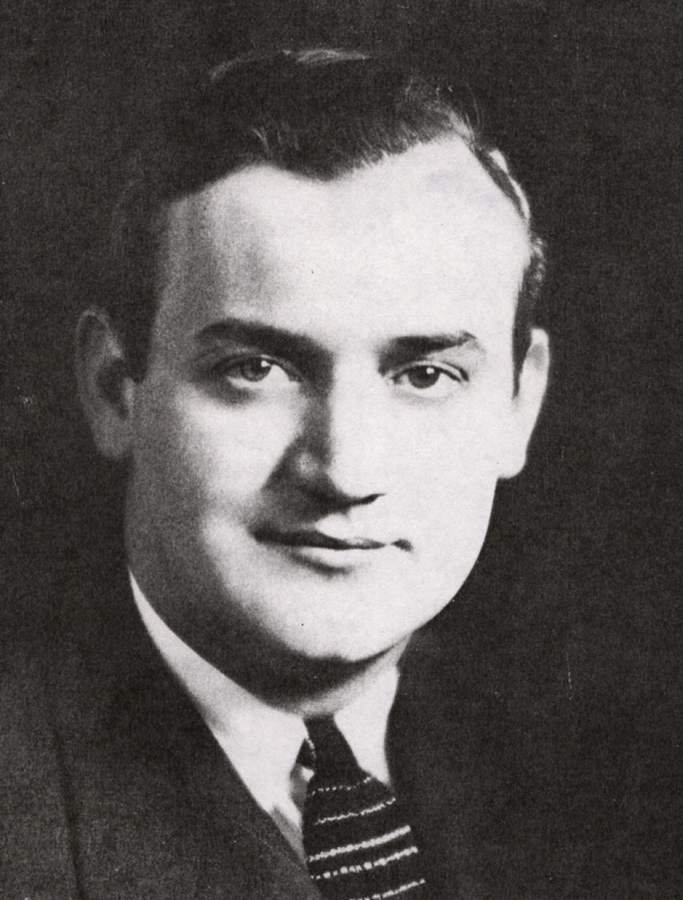Radio Articles
KWK Celebrates 23rd Anniversary
As March 17th rolled around with the “wearin’ o’; the green,” Station KWK in St. Louis celebrated its twenty-third birthday on St. Patrick’s Day.
KWK, now in its swank new quarters in the ultra-modern Globe-Democrat Tower Building, is the dream radio station that its founder, the late Thomas Patrick Convey visualized. And the dream radio station that Convey thought of actually came into being before his untimely death in 1934, primarily because he personally did enough work to weary three men.
Thomas Patrick, the name Convey used on the air, believed with unbounded faith that any project begun on St. Patrick’s Day meant success for him. However that faith developed, St. Patrick and Thomas Patrick Convey both were on the job March 17, 1927, when KWK was launched from studios in the Hotel Chase.
Thomas Patrick Convey came to St. Louis in 1925 from Chicago to promote home shows with radio tie-ins. He ended up by organizing the original “Voice of St. Louis, Inc.,” jointly controlled by 16 St. Louis firms under a unit plan. A year later he struck out for himself when he acquired the interests of Romaine Fielding, a former motion picture idol, who had established a small transmitter with the call letters KFVE in the old Egyptian Building in University City.
Shortly thereafter he secured permission from the Federal Radio Commission, which preceded the present Federal Communication Commission, to change the call letters to KWK and transfer the station to Hotel Chase. KWK was in the Chase Hotel twenty-two years before moving to its present location in the Globe-Democrat Tower Building May 9, last year[1949].
That same year of 1927 was history-making too. KWK brought the St. Louis public the first baseball broadcast from inside Sportsman Park [Note: This has been found to be inaccurate in further research.] and the story of Lindbergh’s epock-making solo flight across the Atlantic Ocean.

Robert T. Convey, KWK’s President, was elected to that position shortly after the death of his father in 1924. Young Convey, then only 21, had had six years’ experience in the radio business, which stood him in good stead. He had started as an announcer when he was 15 and was known to St. Louis listeners as Bob Thomas. He also worked as a salesman, a copy writer, a singer in the very popular “Frank and Ernest” team, and as chief announcer. He had been elected a vice-president of KWK two years earlier.
Under its new head KWK continued to grow. In 1936, the FCC authorized a power increase to 5,000 watts daytime. The new transmitter at Baden Station, Mo., went on the air the same year. It utilized a new 400-foot tower and the latest high-fidelity equipment.
Although since 1927 KWK had been affiliated with the Blue Network of the National Broadcasting Company, in 1938 KWK augmented the Blue Network schedule by an additional affiliation with the Mutual Broadcasting System. In 1941, KWK became the exclusive St. Louis affiliate of Mutual.
At the end of World War II, KWK’s operations began to expand. KWK-FM went on the air in 1946, and in August 1949 KWK-FM also moved to the Globe-Democrat Tower Building from its old quarters in the Boatmen’s Bank Building. KWK-FM operates with 40 kilowatts effective radiated power, and utilizes the antenna atop the 525-foot pour-posted tower from which the new building takes its name.
In 1948 KWK’s application for increased nighttime power was granted, and on January 5, 1949, KWK began operating day and night with a power of 5,000 watts, thereby increasing its nighttime service area by many counties on both sides of the Mississippi River – in both Missouri and Illinois.
On March 31, 1949, KWK and the Globe-Democrat concluded an agreement whereby the newspaper acquired a minority interest in the station and leased its ultra-modern radio building at 12th and Cole in downtown St. Louis to KWK. The Globe-Democrat, which had been operating its FM station, KWGD, in the new building, returned its license to the FCC. At the same time the newspaper also withdrew its application for a television permit, lending its support to KWK’s pending TV application.
The Tower Building was built originally with TV in mind and makes KWK one of the best-prepared stations for the expansion of TV when the “freeze” is finally lifted.
(Originally published in the St. Louis Advertising Club Weekly 3/20/1950).

